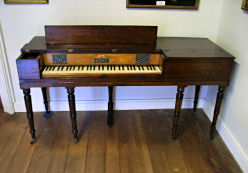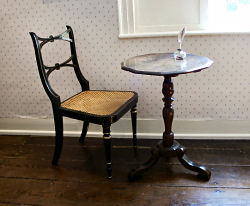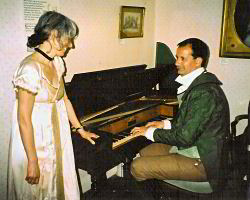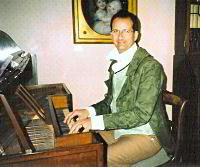QUOTE


This Jane Austen experience will give visitors a unique insight into the genteel country life of early 19th century England, recapturing the flavour of daily routine in Jane's world of wry wit, aristocratic affectation, English eccentricities and the pretensions of the nouveau riche. Born in the village of Steventon, Hampshire, the daughter of a rector, Jane, even as a teenager, displayed a keen perception of the absurd. She wrote about her own world and the things familiar to her as she herself admitted 'Three or four families in a country village is the very thing to work on'.

Jane Austen's house
Jane and her family also had close connections with Bath, and the spa town played a large part in her short life. It was here that she received her only offer of marriage. The posthumously published Northanger Abbey and Persuasion were set mainly in Bath, and the city's unique character dominates nearly every scene. Many of the streets and buildings she wrote about still exist. At the height of her career, Jane became very ill. Addisons disease was a possible diagnosis. She died tragically in 1817 at the young age of forty one. Winchester Cathedral was her burial place. A final work, Sanditon, was left incomplete.

Jane practised on her Square Piano every morning
The cottage in Chawton today is little changed from the place she moved into with her mother and sister Cassandra in 1809. Many of her personal treasures remain untouched, such as the Clementi square piano which is kept in playable condition and will feature in the special recital performed exclusively for Storyline guests. A tour of the house also reveals the writer's many other talents. She was an accomplished pianist, but did you know she also excelled at needlework? Examples of her exquisite handiwork are on display for you to see as are her neat handwritten letters.
Our evening begins on the lawns of the pretty rear gardens (depending on weather and time of year) for an informal drinks' reception. We then move to the quaint Granary where the Education Director will talk about aspects of the life and times of Jane Austen, such as the influence dance and ballroom had on the society of the time. She will relate it to the important part it played in Jane Austen's novels, reflecting the author's own great love of music and dance.

It was at this small writing table by the window that Jane would gain inspiration for her novels.
After an opportunity to explore the interior of the house, we move to the drawing room to listen to the music recital, the highlight of the visit. A talented trio of musicians, dressed in 19th century costume play the music of the day, and the house echoes with the musical delights of Jane Austen's England, in a room which is elegantly furnished much as it was when the writer lived here. Placed in one corner of the living room is Jane's own Clementi square piano, which has been carefully restored. The pianist accompanies the elegant flautist who deftly plays the six key flute. This is music that Jane Austen herself might have played, for she was an accomplished pianist and penned her own arrangements of many of the tunes of the day. You can imagine the young Jane practising her pieces in this room every morning before breakfast. It was in the mornings in the dining parlour that Jane would do most of her writing, gaining inspiration at the little writing table by the window. Jane was also a great letter writer – she used to write between the lines in order to keep to one sheet. The paper was then folded in half and sealed with candle wax before posting. In the afternoons, the Austen ladies would entertain their guests. After an early dinner, they would retire to the drawing room to sew, paint or read. Jane was often seen rushing from the room with a smile on her face - she had to write or rewrite that line before she forgot it!

Our Mr Darcy plays Jane's piano
Testimonials
"How pleased you must have been that the event was so well received. The excellent talk by Louise West was very evocative of the times, particularly with the readings from the novels. It was a lovely idea too, before the recital, to have the drink/break to explore the house and grounds with time to buy souvenirs of the day. The recital itself was superb with such talented musicians and the audience participation. I look forward to hearing about your future ventures."
- Athalinda McIntosh, Surrey
"Thank you for arranging the trip to the Jane Austen House, we couldn’t have asked for a better outing – you even organised the weather. It was so enjoyable and you both looked after us so well. Thank you for all your hard work. "
- Marceline Earnshaw, St. Albans Herts
Testimonials and what the press says
Back to Our Events
|






